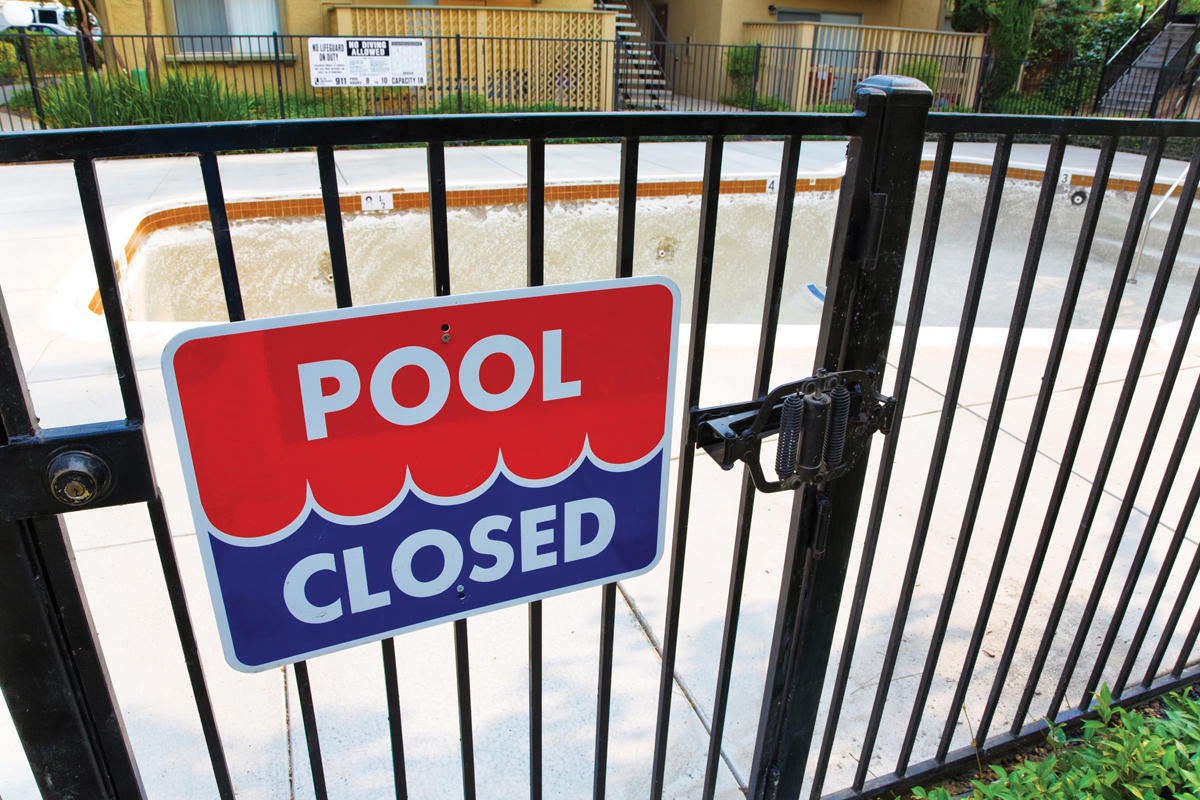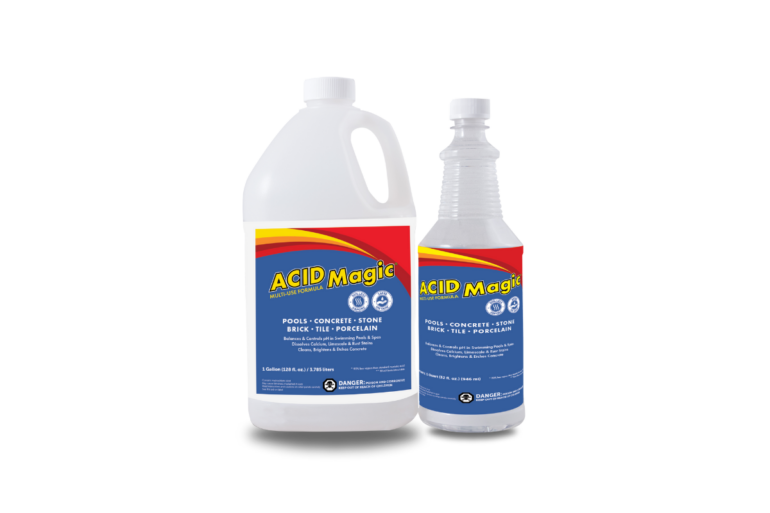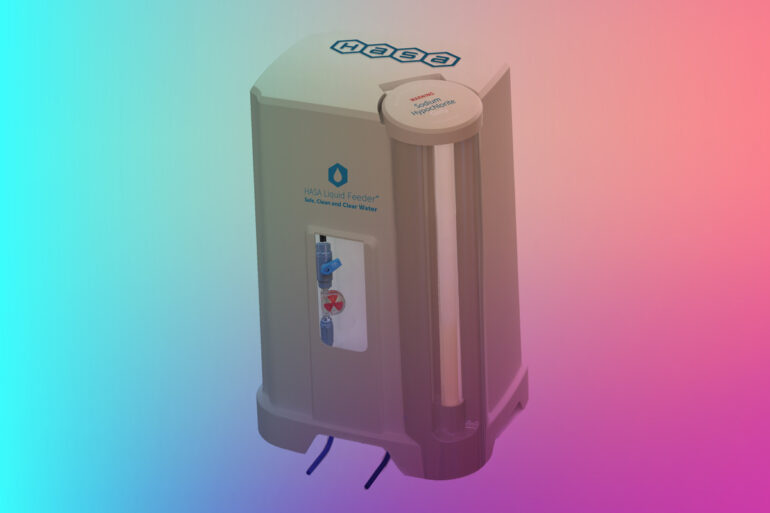Minimize Disruption, Maximize Efficiency

Commercial pool renovations don’t always have to mean extended closures and frustrated customers.
Tony Adams, owner of Adams Pool Group in Pleasanton, California, says by focusing on proactive planning, clear communication and long-term value, these renovations can be completed efficiently with minimal disruption and set facilities up for smoother long-term operations.
Planning for minimal disruptions
Scheduling and communication are often big snags in the renovation process, especially since they hinge on each other. To help, Adams recommends sticking to a schedule and ensuring good communication.
“One of the biggest challenges is balancing the renovation schedule with keeping the pool accessible as much as possible,” Adams says. “For facilities like hotels, gyms and community centers, the pool is a major draw. Extended closures can impact guest satisfaction and revenue.”
Adams says his team works with facility managers to post signage explaining the renovation schedule, potential disruptions and safety measures.
“Regular updates — whether through staff meetings, emails or digital notices — help keep everyone informed and reduce frustration,” he says.
Overcoming common challenges
Shaun Goldberg, chairman for the National Plasterers Council and plaster manager for Burkett’s Pool Plastering in Ripon, California, says having a designated project manager on-site during renovations is key, and having a presite meeting with all parties involved before the work begins can prevent issues.
“The project manager can coordinate and communicate with other contractors and the facility to prevent delays,” Goldberg says.
Another potential challenge is gaining access to the jobsite, Goldberg says.
“Is it indoor, outdoor or on the second story or higher?” Goldberg asks. “Are there stairs involved that would need to be ramped or require more labor to remove demo materials and equipment?”
Goldberg explains that indoor work requires different site protection and dust control, so if there are people using the same facility, you may need fencing around the work area and a designated staging space for trucks, materials and equipment.
Adams’ team takes steps to reduce disturbances, including using dust barriers, scheduling noisy tasks during off-peak hours and opting for quieter machinery whenever possible.
“We also ensure work areas are well-isolated from active pool sections to keep guests and staff comfortable,” he says.
Staying on schedule
To shorten the time the pool is inoperable, Goldberg says to make sure all plans, permits and specs are in hand.
“Some permits take a day, and some take weeks or months to approve,” he says. “Schedule every phase — including the chemical startup — before the work begins.” Goldberg also recommends allowing extra days for “unforeseen things.”
For pool pros trying to complete renovations under tight deadlines, Adams suggests starting with a thorough prerenovation assessment to uncover potential roadblocks.
“Break the project into manageable phases, maintain flexibility and work with an experienced team that knows how to handle unexpected issues efficiently,” Adams says. “Organization, preparation and proactive problem-solving are key to meeting deadlines without compromising quality.”
But even when a deadline isn’t right around the corner, conducting a thorough assessment beforehand will have you thanking yourself later.
Adams says the biggest culprits for delays he’s seen are structural damage and outdated plumbing or electrical systems, which are sometimes uncovered during renovation.
“A detailed prerenovation inspection helps us anticipate potential issues before construction begins,” he explains. “By understanding the existing infrastructure, scheduling necessary upgrades in advance and setting realistic timelines, we can avoid delays and keep the project on track.”
Goldberg and Adams advise ordering materials beforehand, planning renovations around slow seasons and hours and working in phases whenever possible, even overnight shifts if necessary. This allows pool pros to focus on specific areas while keeping the rest of the pool operational.
Conducting detailed risk assessments and coordinating with health inspectors to ensure all renovations meet local codes will help to protect guests and staff.
Adams says using software like Buildertrend to track progress, communicate in real time and manage schedule changes can help automate and manage some of the process, leading to quicker decision-making and a smoother execution.
Long-term benefits of a well-planned renovation
Products like high-performance plaster finishes and special additives can extend the lifespan of renovations, and methods like hydroblasting can cut down on time and disruption. Managing water quality throughout the renovation process is also crucial to ensure optimal results and long-term performance.
“The more you brush the surface, filter the water and balance your chemicals, the sooner you can start using the pool,” Goldberg says.
Adams recommends updates like modified plaster surfaces, all-tile spas, energy-efficient pumps, advanced filtration systems and LED lighting to extend the pool’s lifespan and upgrade its aesthetics. Automation upgrades, like remote-controlled pool systems, also help streamline maintenance and lower operational costs over time. But beyond the initial upgrade, a successful renovation can open the door to a lasting client relationship.
“Renovation shouldn’t be the end of the relationship,” Adams says. “Offering ongoing maintenance services, scheduled inspections and postrenovation support helps keep the pool in top condition and builds long-term client trust.”





